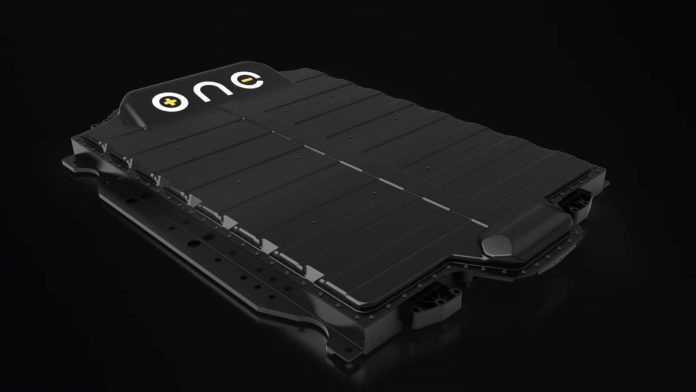It all comes down to the batteries. And that’s where a suburban Detroit-based start-up aims to carve out an outsized roll helping reshape the auto industry.
Today’s battery-electric vehicles have come a long way over the past dozen years, when Nissan introduced the Leaf, the first modern mainstream EV. The typical EV’s range has jumped from barely 100 miles per charge to 200 or more. At the same time, charging speeds have increased measurably. But even the best EVs still don’t meet the expectations of most motorists, recent studies by J.D. Power and other analysts suggest, notably when it comes down to cost.
That’s where Our Next Energy, or ONE, hopes to step in with a pair of new battery technologies it claims can deliver longer range, shorter charging times and significantly reduced costs. It also claims its Aries and Gemini batteries are essentially fireproof, addressing another nagging problem with the lithium-ion technology that currently dominate the EV market.
Longer range, lower costs
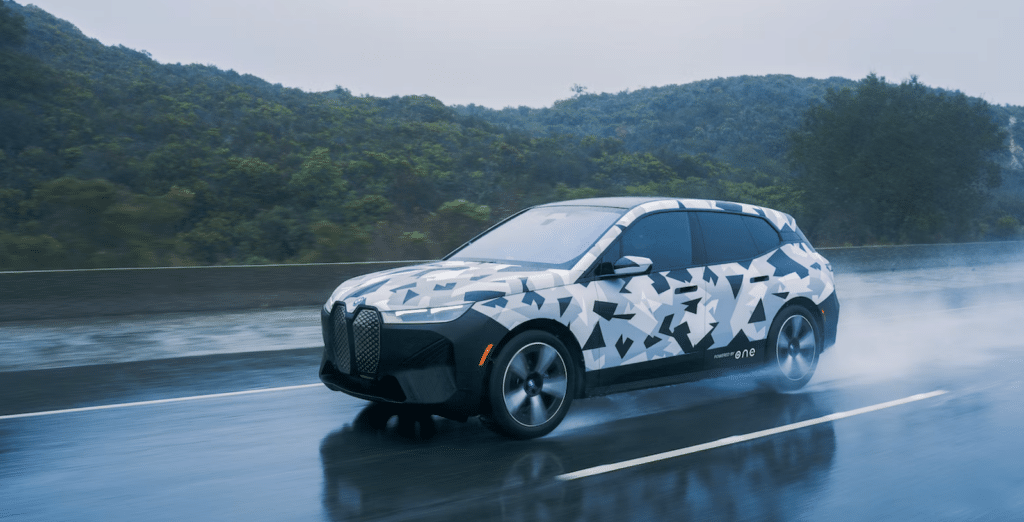
There are still plenty of skeptics who question whether ONE really can deliver a better battery, never mind two. But it’s beginning to gain traction as it prepares to start construction on its first plant, also based in the Detroit suburbs. BMW is now testing a version of the Gemini battery pack that, ONE claims, could yield as much as 600 miles per charge – nearly 50% more than the longest-range battery Tesla now offers. And a prototype pack the start-up tested early this year achieved a full 752 miles before it was fully drained.
Those numbers helped ONE raise $300 million in its second round of equity financing last February, on top of the $220 million in grants its received from the State of Michigan to help finance its first plant. Now valued at $1.2 billion, the battery maker expects to launch pilot production at its headquarters facility in Novi, Michigan by the end of the year. Its dedicated battery plant will launch production by the fourth quarter of 2024, according to ONE founder and CEO Mujeeb Ijaz. The goal is to reach full capacity a year later.
At that point, the facility could produce enough cells to power around 500,000 EVs annually.
Trade-offs
Until recently, most of the industry’s focus has been on lithium-ion batteries that rely on a blend of lithium, cobalt, manganese and nickel. They offer the longest range currently available in batteriesthat are capable of enduring the stresses faced by powering an automobile. But there are a number of problems with this chemical family.
The raw ingredients, particularly cobalt and nickel, are relatively rare, and costs have surged sharply over the past 18 months as more and more automakers commit to EVs. That’s the primary reason why the typical EV costs about $5,000 more than a comparable gas model, according to data from Kelley Blue Book.
Those two metals, in particular, also create the risk of fire, something Ijaz and others warn could become more frequent as EVs become commonplace.
Seeking a better alternative
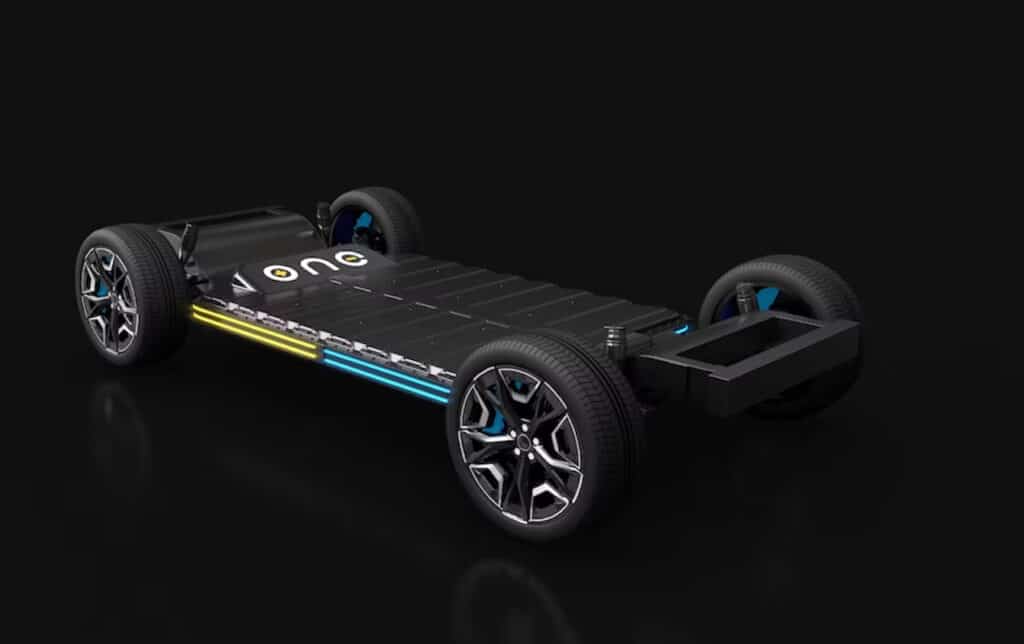
Those are reasons why a number of manufacturers have begun using an alternative battery chemistry, lithium-ion-phosphate. It’s significantly less expensive since it doesn’t need cobalt, and that also minimizes the risk of fire.
But this chemistry, also known as LFP, does sacrifice range. That’s why carmakers including Tesla and Ford are using it primarily in their base, shorter-range models.
“LFP batteries have many advantages over NCM batteries, including cost and durability,” Ijaz said during a background briefing at ONE headquarters this month.
That’s where Ijaz thinks he can change the equation with ONE’s Aries battery. He claims his company has developed a more energy-dense version of LFP batteries that come within about 8% of the best lithium-ion technology currently in production.
Aries and Gemini
Perhaps more importantly, ONE estimates it can drop production costs to as low as $50 a kilowatt-hour, about half as much as the lowest-priced lithium-ion batteries currently available. In a vehicle using 100 kilowatt-hours of cells – what most EVs need to top 300 miles of range – the savings could come to about $5,000. And that would effectively achieve price parity with gas-powered vehicles, Ijaz contends.
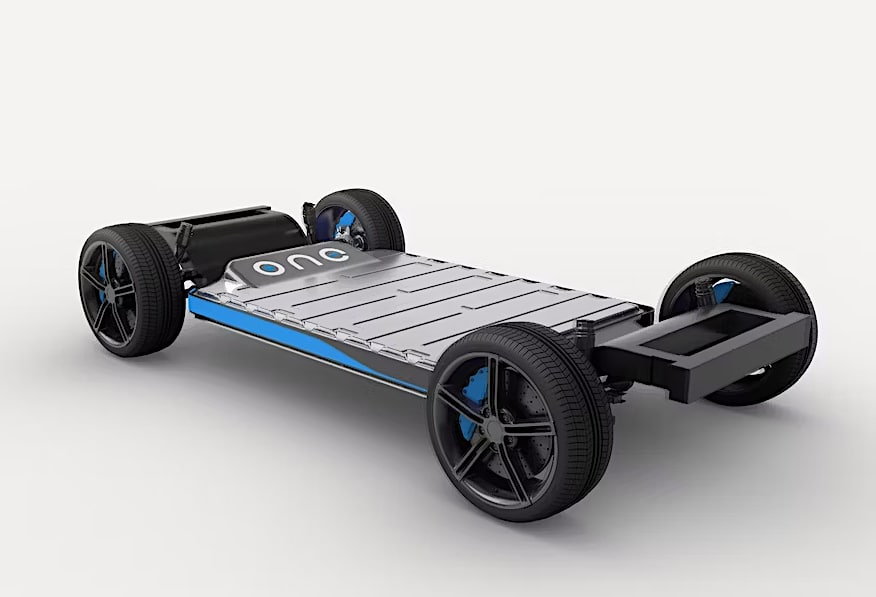
But that’s just one of the ways ONE hopes to transform the EV business. It’s developed another battery chemistry that is even more energy-dense than even the best of today’s lithium-ion cells. This proprietary technology eliminates one of the key components found in virtually all batteries today, the anode. That approach, according to Ijaz, delivers significantly higher energy densities – and the more electrons you pack into a given size or mass, the longer the potential range, ONE claims.
There are other potential advantages, though there’s also a critical drawback. Today’s LFP and lithium-ion automotive batteries typically have extensive lifecycles. They can be fully charged and discharged at least 3,000 times – which means they’re likely to still offer substantial range even when the rest of the vehicle is ready to be scrapped. Right now, Ijaz acknowledged, the “anode-free” battery can deliver only a few hundred full charge-discharge cycles.
How it Works
To take advantage of the more attractive features, while minimizing the drawbacks, ONE has developed the Gemini, a battery pack it compares to a plug-in hybrid-electric drivetrain. But instead of pairing a gas engine with battery-driven motors, a Gemini uses both lithium-iron-phosphate and anode-free cells.
When a vehicle using a Gemini pack starts up it initially draws power from a cluster of LFP cells that might be capable of delivering 150 to 200 miles per charge. That’s more than enough for the daily needs of the typical U.S. motorist, said Ijaz. But, on a longer trip, the vehicle will instantly, and seamlessly, begin tapping into the anode-free cells when it needs more current.
As a result, a vehicle will only tap into the anode-free batteries occasionally, and rarely will they be fully drawn down. That should extend their life all but indefinitely, or so ONE claims.
Skeptics
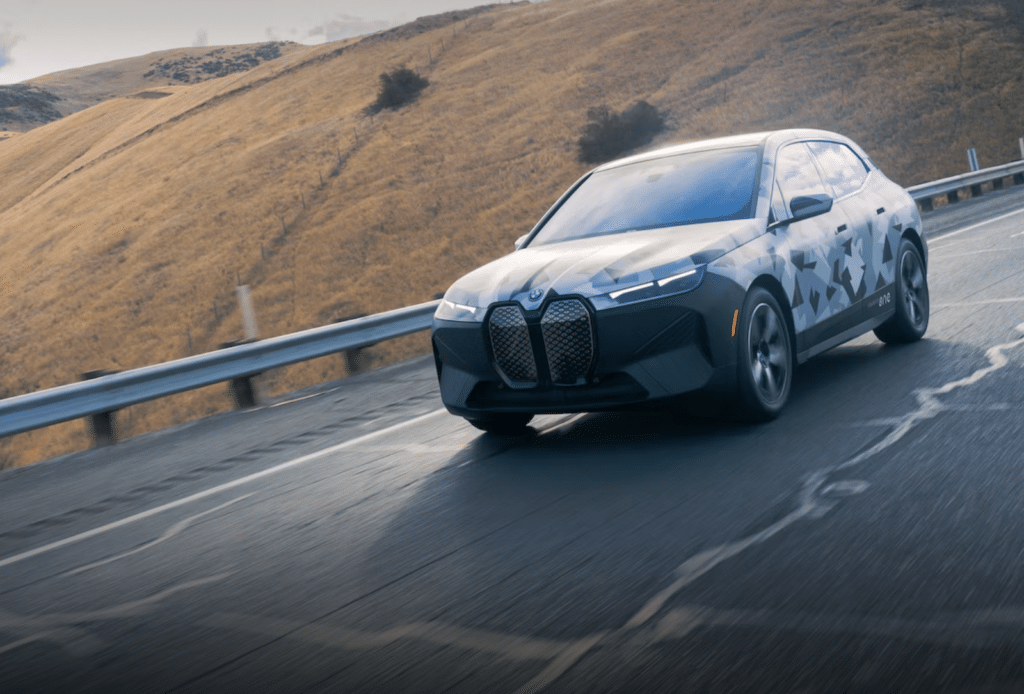
Beyond the trial program Our Next Energy has launched with BMW, the start-up isn’t ready to reveal other partners it’s working with – but it claims to have lined up 10 customers. Insiders hint that this includes some in the stationary power and delivery vehicle markets. It’s unclear if ONE has yet lined up any light vehicle customers.
Its technology is drawing plenty of interest from automakers, but the question is whether ONE can deliver a battery that’s better enough, soon enough.
“They may be better than what we have now, but we’re already working on our next-generation batteries,” said a senior executive working for one of Detroit’s Big 3. (He requested anonymity to speak freely without company approval.)
Solid-state
Even as newer versions of lithium-ion chemistry are under development, some experts believe the real breakthrough will come with the introduction of completely new chemistries. One of the most promising is known as solid-state. It eliminates the liquids and gels traditionally found in batteries, replacing it with ceramics or some other material. Proponents claim solid-state batteries will have higher energy density, quicker charging times, a reduced risk of fire – and costs on par with what ONE claims, as little as $50 a kilowatt-hour.
Toyota earlier this year said it plans to introduce the first automotive solid-state batteries as early 2026, though the broader consensus is that this technology won’t be ready until closer to decade’s end.
Which technology will win is far from certain, but ONE is betting it can deliver significant improvements over the batteries available today and, in the process, carve out a substantial niche for its products.

